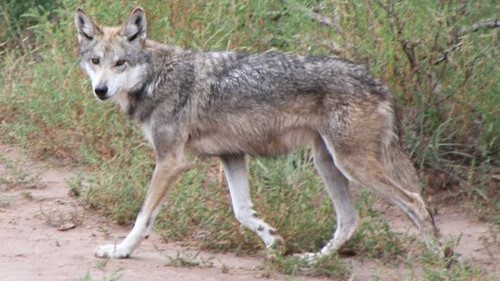Years ago, many Mexican gray wolves lived in the United States. In the 1800s, cattle ranchers were worried that these wolves would hunt and eat their farm animals. During the 1800s and 1900s, ranchers killed many of these wolves. These wolves almost went extinct.
In 1976, the U.S. government passed the Endangered Species Act. These wolves were finally protected! And with help, the species continues to survive today.
The White Mountain Apache Tribe has played an important role in keeping this species alive. They live on a large area of land in Arizona called the Fort Apache Indian Reservation. This area is also a wolf habitat.
Krista Beazley is a wolf biologist on the Apache Reservation. She tracks the movements of Mexican gray wolves that live on the land. Scientists have put special radio collars on wolves. These collars send out beeping signals to a special hand-held antenna. Biologists like Beazley use these antennas to track the wolves. She also follows their footprints and droppings. Wolf droppings tell biologists what the wolf ate, where it spends much of its time, and if it is sick. Beazley makes sure the wolves are alive and healthy.
The number of Mexican gray wolves living in Apache land is growing. Despite this remarkable progress, the species is still endangered. The Apache tribe continues to try to protect these wolves.
The Apache tribe also works to protect many other rare plant and animal species. For example, they saved the Apache trout from extinction by closing certain areas to fishing and by building trout habitats. They also protect habitats for animals like the Mexican spotted owl. The Apache tribe has a close connection with all of nature. Tribe members believe humans must honor the animals and nature around them.









